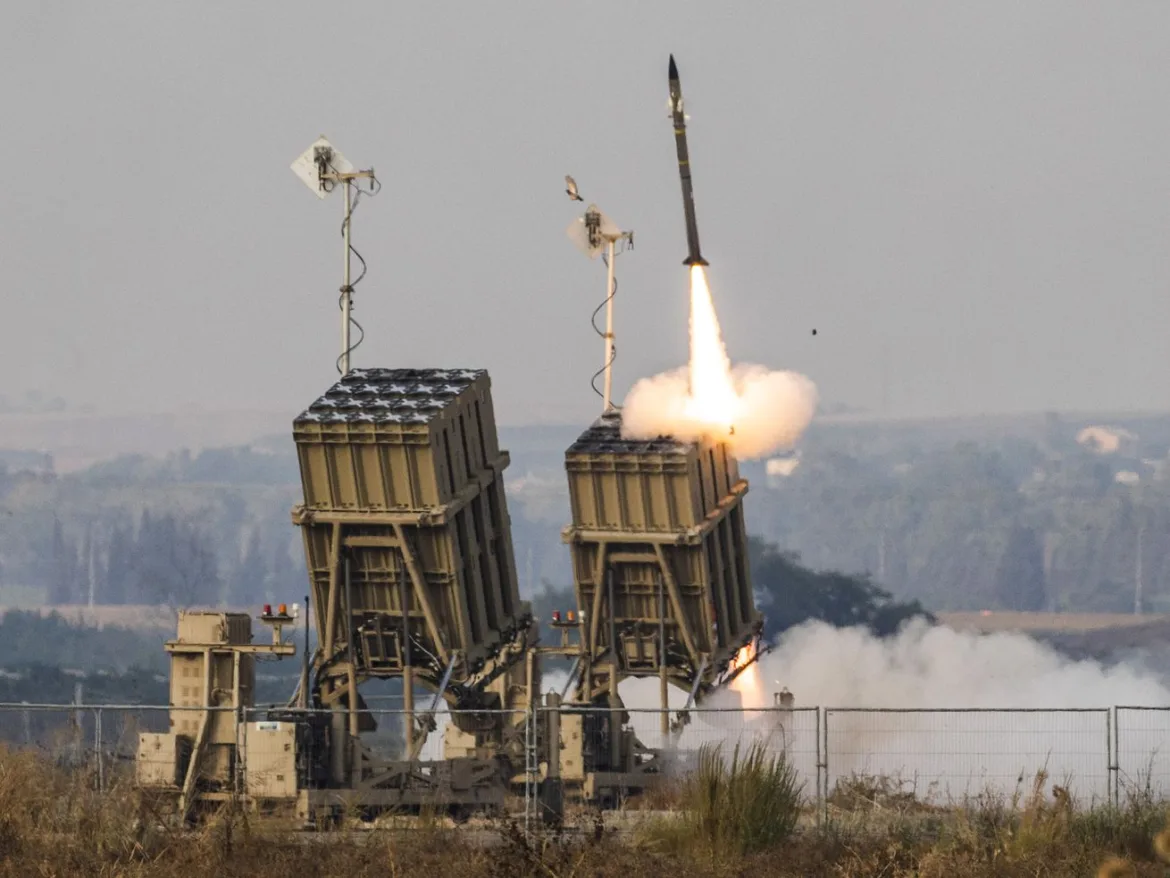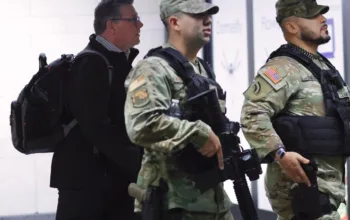Iran had threatened to respond to an assassination at its embassy, and did so Saturday, sparking fears of a wider confrontation.
Iran launched a retaliatory strike Saturday night on Israel for its deadly attack on Iranian officers in the Islamic Republic’s embassy in Damascus after days of signaling it would do so.
The response came in waves throughout Saturday, beginning with the Islamic Revolutionary Guard Corps (IRGC) seizing a vessel in the Red Sea connected to Israeli billionaire Eyal Ofer’s company, Zodiac Maritime. By around 11 pm local time, that had graduated to multiple waves of attack drones and missiles headed toward Israeli targets.
The drones — thought to be slow-moving Shahed-136 models — could have been intended to confuse Israeli radar systems and allow missiles to penetrate, but also could have been chosen as a carefully choreographed response intended to telegraph the regime’s anger at Israel’s embassy strike, on April 1. The Israeli military said the missile barrage included both ballistic and cruise missiles.
The last two weeks and particularly Iran’s attack Saturday have raised fears that finally it — as in, the outright regional war that has been feared ever since Hamas’s October 7 attacks and Israel’s ensuing invasion of Gaza — is here.
And while it’s too early to tell what exactly comes next — including how Israel responds — Iran seems to be signaling it doesn’t want this to escalate further.
For one, the country is in no position to ignite a regional war because of its internal economic and security instability and regime vulnerability. But, after years of US and Israeli assassinations of Iranian nuclear scientists and military commanders, the regime likely calculated that it had no choice but to respond to the Damascus strike.
But an hour after the drone strike, Iran’s permanent mission to the UN wrote on X, formerly Twitter, that, “The matter can be deemed concluded.”
Here’s what we know so far
The attack Saturday was an alarming escalation in the long-running tensions between Iran and Israel. Iran has said that it has launched dozens of drones; Israeli military sources said more than 100, according to the Associated Press.
Because it took the drones hours to reach Israeli airspace, US, Israeli, and Jordanian forces were prepared to intercept the aircraft (Jordan and several other neighboring countries shut down their airspace Saturday night.)
At the time of this writing, according to Reuters, the US has shot down an undisclosed number of the drone, and Ha’aretz reported that the ballistic missile phase of Iran’s attack had finished.
The US has vowed steadfast support in case of an Iranian attack on Israeli territory, increasing the number of US forces and assets in the region to prepare for such a situation, and the UK has supported the US’s efforts in the region as well.
The drones were reportedly headed to the Golan Heights, a region which Israel captured from Syria in the 1967 War, and the Negev desert, where there are several Israeli military installations and a US base. Israel’s primary nuclear research center and one of its largest air bases are both located in the Golan Heights.
Both Israeli and Iranian governments confirmed that Iran had also launched cruise missiles toward Israeli targets, synchronized to hit at the same time the drone swarms reached Israeli airspace.
Israel’s air raid alert system sounded warnings across areas of southern Israel including the Negev, as well as the occupied West Bank, Jerusalem, and the Golan Heights, indicating that the Iranian weapons were headed toward their targets. Israeli missile defense systems reportedly intercepted many of them.
One person has been injured so far, according to Israel’s emergency services; and minor damage was caused to an Israeli military base, according to spokesperson Rear Admiral Daniel Hagari.
Does this mean a regional war is imminent?
A major concern over the past six months of Israel’s war in Gaza following the October 7 Hamas attacks has been whether it will spill into a regional war.
Iran’s rhetoric in response to Israel’s invasion of Gaza has been fiery, but until now, the Islamic Republic — which considers Israel an interloper in Muslim lands — has been content to let affiliated groups, like Hezbollah in Lebanon and militias in Iraq and Syria, fight those battles. Hezbollah and Israel frequently trade fire over the southern Lebanese border, which has killed at least 66 Lebanese civilians and approximately 9 Israeli civilians, and Iraqi and Syrian militia groups have attacked US installations in both those countries over 150 times in the past six months in response to the US’s continued military support for Israel.
Early on in the war, the US sent warships to the region to discourage further escalation.
Yemen’s Houthi rebel group has also targeted ships in the Bab al-Mandeb Strait of the Red Sea, claiming to target vessels in retaliation for the Israeli military’s destruction of Gaza and killing of more than 33,000 Palestinians. (Though, as my colleague Joshua Keating has reported, the attacks also serve a number of the Houthis’ other interests.)
Then, on April 1, Israel launched an attack on Iran’s embassy in Damascus, Syria, killing multiple IRGC Quds Force commanders, who manage operations for Iran-aligned forces around the region. Embassies are considered to be inviolable, and serious attacks on such premises are rare.
Though the Islamic Republic can ill afford an all-out regional war, “They were compelled to do this,” Ali Vaez, director of the International Crisis Group’s Iran program, told Vox.
Internal dynamics, including an economy crippled by inflation, sanctions, and corruption; widespread dissatisfaction with the regime exemplified by the large-scale protest movement after the death of 22-year-old Mahsa Amini, and internal security crises due to the rise of ISIS-Khorasan Province and Baluch separatist groups, make war with Israel and the US deeply unappealing for the regime. But for days after the attack on its Damascus embassy, Iran was promising to respond.
“The Iranians concluded that the risk of not responding outweighed the risk of responding,” Vaez said. Hard-liners within the government — the leadership’s last remaining sector of support — had publicly criticized the lack of response to multiple assassinations and escalatory actions attributed to Israel.
Thus far there have been no reports of Israeli deaths. But whether and how Israel will respond remains to be seen.



